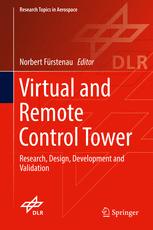

Most ebook files are in PDF format, so you can easily read them using various software such as Foxit Reader or directly on the Google Chrome browser.
Some ebook files are released by publishers in other formats such as .awz, .mobi, .epub, .fb2, etc. You may need to install specific software to read these formats on mobile/PC, such as Calibre.
Please read the tutorial at this link: https://ebookbell.com/faq
We offer FREE conversion to the popular formats you request; however, this may take some time. Therefore, right after payment, please email us, and we will try to provide the service as quickly as possible.
For some exceptional file formats or broken links (if any), please refrain from opening any disputes. Instead, email us first, and we will try to assist within a maximum of 6 hours.
EbookBell Team

4.7
96 reviewsThe interdisciplinary research and development work carried out in the last ten years which is presented in this book aimed at replacing the conventional airport control tower by a new “remote tower operation” work environment (RTO) which should enhance work efficiency and safety and reduce costs. This revolutionary human–system interface allows for remote aerodrome traffic control without a physical tower building and enables the establishment of remote airport traffic control centers (RTC) of which each may serve several airports from a central location.